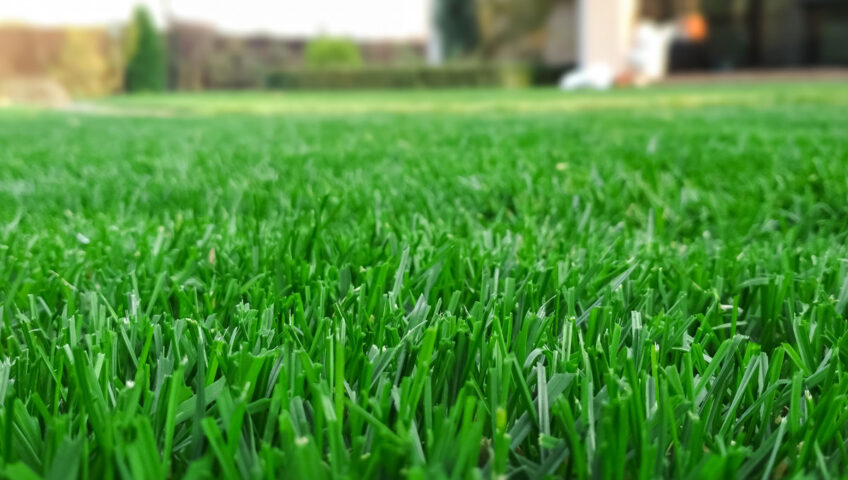Most people know that having a healthy lawn requires good soil, the right amount of water, and plenty of sunlight. But did you also know that dethatching can be an equally important part of your yearly lawn care routine? Not all lawns will require dethatching, but it is important to be able to tell when it does need it, and how to do it properly.
What is Thatch?
Everytime you mow your lawn, small bits and pieces of grass get left behind to die and settle on top of your soil. This is thatch. A small amount is actually good for your soil, as it breaks down and adds nutrients that the grass will feed off of, and also helps to hold in moisture. Anything less than half an inch is considered safe and beneficial for your lawn. Too much thatch, however, can lead to problems as it prevents water and air from reaching the down into the soil. If your grass isn’t growing as well as it should despite proper care, there is a very good chance that thatch is to blame. An easy way to tell if you have too much thatch is to touch it; if the thatch is too thick, your lawn will feel spongy and it will be difficult to get your finger all the way down to the soil.
How to Dethatch
Before you work on dethatching your lawn, you should first trim it to half its normal height. Make sure to mark and shallow sprinkler heads or water lines if using powered dethatching equipment. There are a number of different ways that you can go about dethatching your lawn. These include:
- Manual dethatching with special rakes.
These heavy, short-tined rakes have curved blades that are designed to dig into your lawn and pull up thatch as you rake. Dethatching rakes are good for light thatch and general thatch maintenance on small lawn areas.
- Power rakes.
These mower-like devices have rotating, rake-like tines that dig into thatch at the soil level and pull it up. Power rakes work well for lawns with thinner thatch layers and grass that can withstand intense raking.
- Vertical mowers.
Also called verticutters, these mowers have vertical blades that slice down through the thatch layer and into soil, pulling thatch—and often grass roots—to the surface as they go. Their blades adjust to control how much thatch you remove at once. Verticutters are best for thick thatch layers on lawns that have been neglected for an extended period of time.
You can purchase a manual dethatching rake at most home and garden stores. For power rakes and vertical mowers, you will need to find a local equipment rental store. These stores often keep power rakes and vertical mowers on hand, especially during the dethatching season. Whatever option you choose, when you are finished make sure to clean up all of the debris and water your lawn thoroughly and consider fertilizing to help any damaged areas recover.
The Best Time to Dethatch
The best time to dethatch your lawn depends on the type of grass you have, as it should be done when the grass is actively growing and the soil is moderately moist. For cool season grasses, this means early spring or early fall. For warm-season grasses, late spring through early summer.
If you aren’t ready to tackle this job yourself, or if your thatch is extremely thick, consider calling in a professional instead. We offer dethatching services to suit any yard size, and always clean up all debris. Give us a call today to schedule a free consultation!

